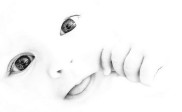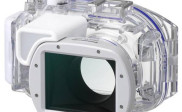Learn How to Correct Common Composition Mistakes
A photograph is a visual medium which has composition elements that can either hold the viewer’s attention, or distract them from fully appreciating the entire image. Let us pinpoint several common composition mistakes that photographers make, and find out how these can be fixed or avoided.
- Do not center the horizon line in the frame – a horizon line can divide your composition into two parts which might not look visually appealing if it is situated smack dab in the middle of the frame. You can easily avoid this issue while composing your shot. Check the horizon line and make sure it is located at approximately one-third of the frame. You can then use the space to give emphasis to a certain part of the composition. For example, if your shot is of a landscape with a gorgeous sky, the sky can occupy two-thirds or more of the photograph.
Photo by suchitra prints
- When taking full body shots, remember to include the person’s feet and top part of the head in the composition – who hasn’t made this mistake at one point in his life? When you look through the camera’s viewfinder or at the Live View, you might check out your subject’s face, the clothes, or the background to make sure they aren’t distracting. You might forget to also check if the person’s feet or top part of the head is included in the shot. Always remember to have all the necessary details in the composition. Give more space at the edges of the frame rather than cropping too tight before you press the shutter. This way, you can just crop out excess edges in post-processing rather than risk removing important details.
Photo by PinkMoose
- Do not shoot too far away from your subject – unless you are doing it deliberately to present an interesting negative space or background in the composition, try not to shoot so far from the subject that it does not make much of an impact in your shot. Go closer to your subject to capture its fine details. If you are unable to get close, you can use your camera’s zoom feature if it has one. Take note that optical zoom gives a higher quality image compared to digital zoom.
Photo by Lightstaff
- Get rid of distracting objects – great images do not have any form of distracting elements that can weaken the visual impact of the composition. When composing, look at the subject and the scene. See if there is anything that could distract the eyes of the viewer from the point of focus. Remove anything that could be potential clutter in the composition. If it is immovable, like a tree or a lamppost, you can try changing the angle of the camera or your shooting position so that it is no longer seen in the frame.
Photo by Tambako the Jaguar
- Get your focus right – unless you are creating an intended effect, the focus is usually on that spot in the photo where you want the viewer to pay attention to the most. This point of focus is your subject. A common composition mistake is focusing on the wrong spot in the frame, leaving the subject out of focus. Another mistake is not focusing on anything at all, leaving the entire shot blurry. Most compact cameras are equipped with the focus-lock function, which allows you to pinpoint the area you want to be the most clear and defined in the composition. Half-press the shutter button to lock the focus on that spot, and then press all the way to take the shot. DSLR cameras give you the option to manually focus on the subject. You can also use a shallow depth of field to make your subject stand out in defined clarity against a blurry background.
Photo by Kevin Pack
Read more about composition in photography at
1- 7 Tips and Tricks for Better Photo Composition
2- Approach To Composition In Photography
3- Dealing with Light and Composition in Landscape Photography








